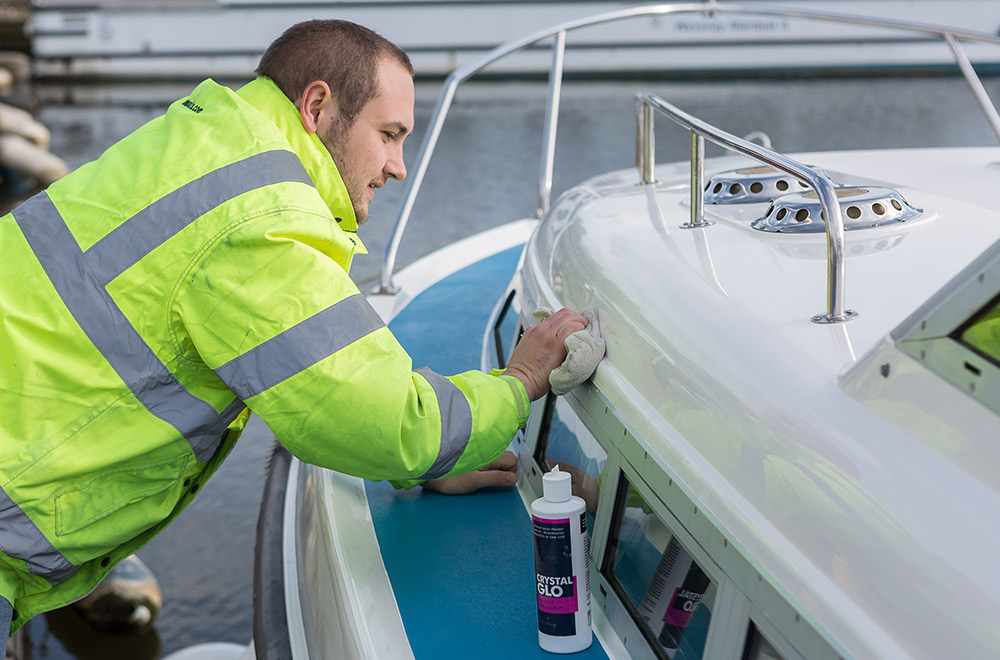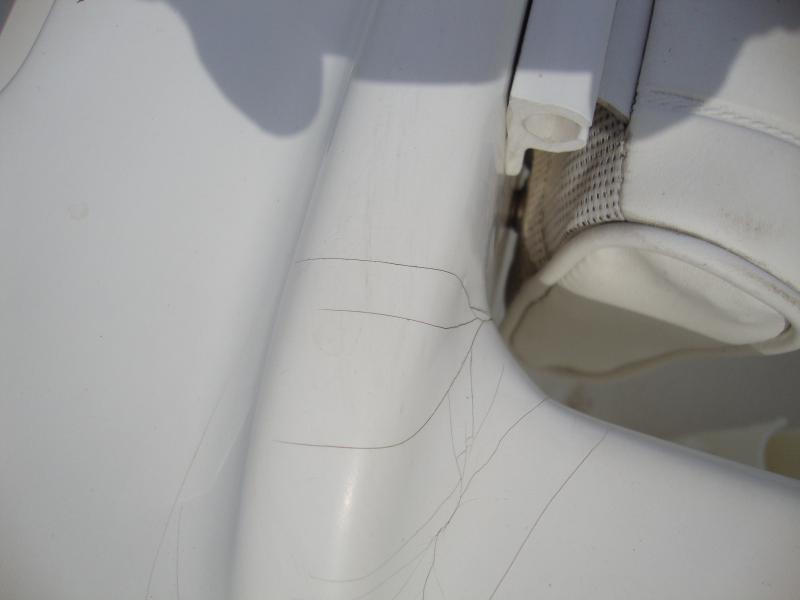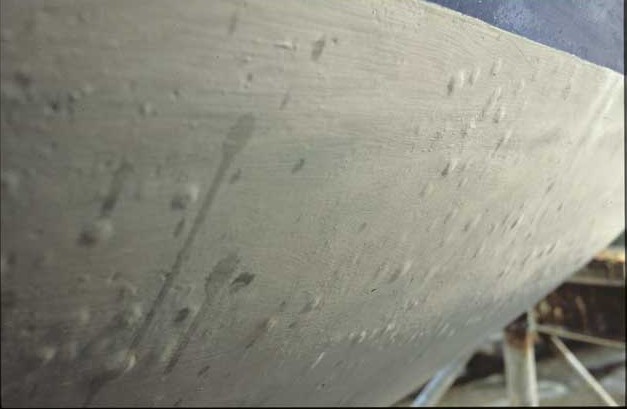
The importance of maintaining your boat’s gelcoat
Many people think of gelcoat simply as something that keeps their boat looking good, adding a smooth shine and containing the pigment that gives your boat its signature colour. But every time you bump up against a pier, moor up in strong sunshine or step on deck with sharp grit in the sole of your shoes, it’s gelcoat that works hard to protect your boat from damage, moisture and UV light.
With well-maintained gelcoat, the need for bigger repairs can be avoided. Scratches, gouges and dents are the most common issue that will need attention, but problems such as blistering and spiderweb-like cracking in your gelcoat can be indicative of more serious concerns.
Poorly applied or badly scratched gelcoat can lead to water permeating your fibreglass and fixing that will take much more time and money than simply making the effort to take care of the gelcoat in the first place.

Wear and Tear
Even something as simple as cleaning your gelcoat with the wrong product could cause real damage. Minor knocks and scratches are a fairly common occurrence, along with gelcoat staining from seaweed and other plants in the water, general weathering and spillages on deck. Removing stains with harsh products designed for household use can take the coating right off your fibreglass, so stick to cleaners specifically designed for use on boats and reapply protective polish or wax where necessary.
For small chips and scratches, a simple gelcoat paste can be used to fill and finish in one go. You’ll still need to sand and polish the repaired area when you’re done so that it doesn’t stand out, but if you’re not confident in doing this, it’s better to leave it to a professional than not to do the job at all. Leaving fibreglass exposed to the elements is certain to do longer-lasting damage, and when the fibreglass itself starts to weaken you’ll be faced with radial cracks or blistering in your gelcoat that could require it to be completely removed and replaced.
Easy ways to minimise the risk of dents and scratches include covering your boat when it is not in use and adding cloth covers to your fenders. Dirt on the edges of your fenders can end up getting ground into gelcoat over time, while failing to use them enough or at all leaves your boat at risk of serious damage.
Radial, thermal and linear cracks
While some hairline cracks are nothing more than a cosmetic problem, others are caused by manufacturing defects, thermal fatigue or other stresses and strains. You can often ascertain which is which by looking at the pattern the crack has formed.
Spiderweb-like cracks, or radial cracks, are generally caused by impact or by fixtures that are putting a strain on particular parts of your boat – such as bolted attachments.
Simple linear cracks can be caused by strain from flexing of the fibreglass underneath and are particularly common in older boats where the gelcoat is thicker and therefore less flexible itself.
Thermal fatigue cracks, caused by the rapid expansion or contraction of gelcoat in high or low temperatures, can be parallel or non-directional and come in clusters.
While patching kits should be used to make temporary repairs to any of these varieties of crack as soon as they are observed, it’s important to look into professional gelcoat repairs both to find out if there are any structural issues with your boat and to ensure that larger, more detailed work is undertaken correctly.

Blistering
If your gelcoat has started to blister, it’s almost certainly time to seek professional help. While blistering isn’t the end of the world, it does indicate that water has been absorbed through your gelcoat or through exposed laminate. Gelcoat blistering, or osmosis as it is commonly referred to, is often simply the result of prolonged periods in the water and is most likely to occur five to ten years after purchase than in a new vessel. A few blisters here and there can be fixed without too much concern, but large quantities accompanied by cracks should be dealt with as a matter of urgency.
Removing and repairing blisters will involve ‘bleeding’ them, grinding down to the laminate, allowing the boat to fully dry out (which can take months) and only then filling gaps, sanding and repainting. To avoid blistering and the need for extended repairs you can coat the hull of a boat in epoxy resin prior to applying anti-fouling paint, and if possible, store the boat out of water when it isn’t in use.

By taking care of your gelcoat and being quick to act when problems do occur, it’s easy to keep serious defects at bay and maintain the overall value of your boat.
